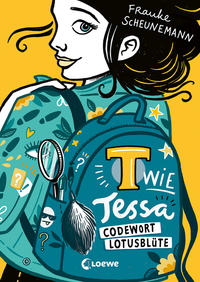Your Search Results
-
Promoted ContentThe ArtsApril 2025
Studio Electrophonique
The Sheffield space age, from The Human League to Pulp
by Jamie Taylor
The amazing story of the home studio that helped launch some of Britain's most beloved bands. The Sheffield space age began in 1961, when local mechanic Ken Patten won a tape-recording competition by recreating the sound of a rocket launch using a pencil and a bicycle pump. In the decades that followed, the makeshift home studio he constructed became the launch pad for a group of young musicians who would shape the futuristic sound of 1980s pop. The Human League, Heaven 17, Pulp, ABC and others made their early recordings with Ken, whose DIY ethic was the perfect fit for a city facing industrial decline but teeming with ideas. Studio Electrophonique tells the story of a generation seeking new frontiers in music, using everything they could lay their hands on - from science fiction novels to glam rock, Dada art and cheap electronics - to get there. Drawing on original interviews with Jarvis Cocker, Martyn Ware, Mark White and others, it brings to light a world of humour, charm, creativity and unfounded yet undaunted self-belief.
-
Promoted ContentJanuary 2023
Die Wilden Hühner. Doppelband, Band 1 und 2
by Cornelia Funke, Florentine Prechtel
»Abenteuer kann man doch nicht planen wie Ballett oder so was. Die warten um die Ecke und – zack! – plötzlich sind sie da!«, erklärt Sprotte ihren Freundinnen. Tatsächlich lässt das erste Abenteuer für ihre Mädchenbande Die Wilden Hühner nicht lange auf sich warten. Denn Die Pygmäen, vier Jungs aus ihrer Klasse, lassen nach einem Streit die Hühner von Sprottes Oma frei. Das schreit nach Rache... Im zweiten Band geht's für Sprotte und ihre drei Freundinnen auf Klassenfahrt ans Meer. Nervig ist nur, dass Die Pygmäen auch mitfahren und ständig versuchen der Mädchenbande eins auszuwischen. Doch kaum angekommen, stecken Die Wilden Hühner auch schon mittendrin in einem neuen Abenteuer.
-
 Trusted Partner
July 2025
Trusted Partner
July 2025Das Mädchen aus der Schwebenden Welt (Floating World-Dilogie, Band 1)
Retelling trifft auf Hidden Identity - Voller Spannung, Liebe und bewegender Botschaften - Mit Farbschnitt in der 1. Auflage
by Axie Oh, Nadine Mannchen
Wenn Licht auf Schatten trifft ... Seit Jahren verbirgt Ren ihre Lichtmagie – bis ihre Familie von einem Dämon angegriffen wird. Da bricht das Licht aus ihr heraus; so hell, dass es selbst ihre Feinde sehen. Doch Ren hat noch andere Sorgen: Ihr Onkel wurde durch den Dämon vergiftet und sie muss dringend ein Heilmittel finden. Auf ihrer Suche begegnet ihr ausgerechnet Sunho – ein Kopfgeldjäger, der auf sie angesetzt wurde. Sunho ahnt nicht, wer Ren wirklich ist. Und wie sehr ihre Schicksale miteinander verwoben sind ... Der Auftakt einer fesselnden Romantasy-Dilogie basierend auf einer koreanischen Sage Axie Ohs New York Times -Bestseller ist eine außergewöhnliche Neuerzählung einer koreanischen Sage voller Spannung und Geheimnissen , Liebe und märchenhafter Atmosphäre . Ein Muss für alle Romantasy-Fans! Band 1 einer fesselnden Romantasy-Dilogie Koreanische Mythologie : basierend auf der Sage Der Holzfäller und die Himmelsfee Beliebte Tropes : Grumpy x Sunshine, Hidden Identity, Found Family sowie eine abgewandelte Form von Enemies to Lovers Spannende Komibantion : Action, Geheimnisse und Intrigen treffen auf märchenhafte Momente, die an Studio-Ghibli-Filme erinnern Originelles Setting : Schwebende Welt vs. Unterwelt vs. idyllische Berglandschaft Über den Kampf mit den eigenen Dämonen und den Glauben an das innere Licht Erstauflage mit opulentem Farbschnitt und exklusiver Charakterpostkarte - Nur in der 1. Auflage!
-
 Trusted Partner
Humanities & Social SciencesMarch 2016
Trusted Partner
Humanities & Social SciencesMarch 2016The Model Arab League manual
A guide to preparation and performance
by Philip D’Agati, Holly Jordan
This textbook provides a comprehensive overview of the Model Arab League (MAL) programme for first time and returning students. Drawing on over fourteen years of combined experience in successfully leading award-winning MAL delegations, Philip D'Agati and Holly A. Jordan provide students with an introduction to being a delegate and tips on effective research techniques as well as simplifying the complex process of taking on the identity of a state and then representing it effectively in a MAL debate. ;
-
 Trusted Partner
Business, Economics & LawSeptember 2016
Trusted Partner
Business, Economics & LawSeptember 2016The British people and the League of Nations
by Helen McCarthy
-
 Trusted Partner
2022
Trusted Partner
2022aporello: Human Parasites
by Christine Bender-Leitzig, Dr. Reiner Pospischil
Infestation with parasites usually causes revulsion in those affected and many infections are kept secret through shame. In recent times there has also been a rise in non-native parasites, which often remain undetected. This book gives an overview of the most significant human parasites as well as their - prevalence - symptoms - treatment possibilities. The text is accompanied by illustrations that help when giving everyday advice. Practical icons show at a glance when, for example, the authorities must be notified and what special things need to be considered. Highly concentrated knowledge in an instant? That’s aporello!
-
 Trusted Partner
May 2020
Trusted Partner
May 2020Umschaltspiel
Die Evolution des modernen europäischen Fußballs
by Michael Cox, Stephan Gebauer
Der Fußball, heißt es, schreibt die unglaublichsten Geschichten. Höchste Zeit also für eine unglaublich gute Geschichte des Fußballs. Michael Cox erzählt sie ab dem Jahr 1992, als die Änderung der Rückpassregel und die Einführung der Champions League den Sport veränderten und einen weiteren Professionalisierungsschub auslösten. Cox zeichnet nach, wie die großen europäischen Fußballländer mit ihren Clubs und Nationalmannschaften jeweils eine Zeit lang dominierten, bis die Konkurrenz ihren Erfolgscode knackte und die Evolution weiter vorantrieb. José Mourinhos abgezockte Abwehrmaschinen, Pep Guardiolas Kurzpass-Tiki-Taka, das Gegenpressing und Umschaltspiel von Jürgen Klopp – Cox porträtiert die prägenden Figuren dieser knapp drei Jahrzehnte und erklärt ihre taktischen Neuerungen. Und er erinnert an legendäre Spiele, etwa an den Moment, als der portugiesische Nationaltorwart Ricardo im EM-Viertelfinale 2004 plötzlich seine Handschuhe auszog, den letzten Elfmeter der Engländer hielt und den entscheidenden selbst verwandelte.
-
 Trusted Partner
April 2020
Trusted Partner
April 2020Umschaltspiel
Die Evolution des modernen europäischen Fußballs
by Michael Cox
Der Fußball, heißt es, schreibt die unglaublichsten Geschichten. Höchste Zeit also für eine unglaublich gute Geschichte des Fußballs. Michael Cox erzählt sie ab dem Jahr 1992, als die Änderung der Rückpassregel und die Einführung der Champions League den Sport veränderten und einen weiteren Professionalisierungsschub auslösten. Cox zeichnet nach, wie die großen europäischen Fußballländer mit ihren Clubs und Nationalmannschaften jeweils eine Zeit lang dominierten, bis die Konkurrenz ihren Erfolgscode knackte und die Evolution weiter vorantrieb. José Mourinhos abgezockte Abwehrmaschinen, Pep Guardiolas Kurzpass-Tiki-Taka, das Gegenpressing und Umschaltspiel von Jürgen Klopp – Cox porträtiert die prägenden Figuren dieser knapp drei Jahrzehnte und erklärt ihre taktischen Neuerungen. Und er erinnert an legendäre Spiele, etwa an den Moment, als der portugiesische Nationaltorwart Ricardo im EM-Viertelfinale 2004 plötzlich seine Handschuhe auszog, den letzten Elfmeter der Engländer hielt und den entscheidenden selbst verwandelte.
-
 Trusted Partner
The ArtsNovember 2020
Trusted Partner
The ArtsNovember 2020Stage rights!
The Actresses’ Franchise League, activism and politics 1908–58
by Naomi Paxton
Stage rights! explores the work and legacy of the first feminist political theatre group of the twentieth century, the Actresses' Franchise League. Formed in 1908 to support the suffrage movement through theatre, the League and its membership opened up new roles for women on stage and off, challenged stereotypes of suffragists and actresses, created new work inspired by the movement and was an integral part of the performative propaganda of the campaign. Introducing new archival material to both suffrage and theatre histories, this book is the first to focus in detail on the Actresses' Franchise League, its membership and its work. The volume is formulated as a historiographically innovative critical biography of the organisation over the fifty years of its activities, and invites a total reassessment of the League within the accepted narratives of the development of political theatre in the UK.
-
 Trusted Partner
Humanities & Social SciencesSeptember 2021
Trusted Partner
Humanities & Social SciencesSeptember 2021Populism in Europe
Lessons from Umberto Bossi's Northern League
by Davide Vampa, Daniele Albertazzi
Populism in Europe offers a detailed and systematic analysis of the ideology, electoral and governmental performances, organisational model, type of leadership and member activism of the Northern League under its founder, Umberto Bossi (1991-2012). Based on a wealth of original research, the book identifies the Northern League's consistent and coherent ideology, its strong leadership and its ability to create communities of loyal partisan activists as key ingredients of its success. Through their in-depth analysis, Albertazzi and Vampa show that the League has much to teach us about how populists can achieve durability and rootedness and how parties of all kinds can still benefit from a committed and dedicated membership today.
-
 Trusted Partner
January 2017
Trusted Partner
January 2017Der Deutsch-Russische Handels- und Schiffahrtsvertrag vom 20. März 1894.
(Staats- und socialwissenschaftliche Forschungen XVII.3).
by Human, Arthur
-
 Trusted Partner
Humanities & Social SciencesNovember 2024
Trusted Partner
Humanities & Social SciencesNovember 2024Instruments of international order
Internationalism and diplomacy, 1900-50
by Thomas W. Bottelier, Jan Stöckmann
During the first half of the twentieth century, world politics was reshaped in pursuit of a new international order. The ideological foundations of the 'new diplomacy' (and its fate during the interwar period) are well known. This book instead examines the practices of internationalism and diplomacy from the First Hague Conference of 1899 to the aftermath of the Second World War. By focusing on these practices, such as disarmament regimes or public diplomacy, and their use as instruments to build international order(s), it emphasises the constructed, contested, and experimental character of what subsequently became a standard repertoire of international politics. Essays from a range of interdisciplinary scholars address well-established principles such as self-determination, and also less prominent practices such as small arms control or parliamentary inquiry. The book makes a major contribution to the growing historiography on twentieth-century internationalism.
-
 Trusted Partner
Humanities & Social SciencesJune 2026
Trusted Partner
Humanities & Social SciencesJune 2026Instruments of international order
Internationalism and diplomacy, 1900-50
by Th. W. Bottelier, Jan Stöckmann
During the first half of the twentieth century, world politics was reshaped in pursuit of a new international order. The ideological foundations of the 'new diplomacy' (and its fate during the interwar period) are well known. This book instead examines the practices of internationalism and diplomacy from the First Hague Conference of 1899 to the aftermath of the Second World War. By focusing on these practices, such as disarmament regimes or public diplomacy, and their use as instruments to build international order(s), it emphasises the constructed, contested, and experimental character of what subsequently became a standard repertoire of international politics. Essays from a range of interdisciplinary scholars address well-established principles such as self-determination, and also less prominent practices such as small arms control or parliamentary inquiry. The book makes a major contribution to the growing historiography on twentieth-century internationalism.
-
 Trusted Partner
Sociology: death & dyingMay 2017
Trusted Partner
Sociology: death & dyingMay 2017Human remains and identification
Mass violence, genocide, and the ‘forensic turn’
by Series edited by Jean-Marc Dreyfus, Élisabeth Anstett. Edited by Élisabeth Anstett, Jean-Marc Dreyfus
Human remains and identification presents a pioneering investigation into the practices and methodologies used in the search for and exhumation of dead bodies resulting from mass violence. Previously absent from forensic debate, social scientists and historians here confront historical and contemporary exhumations with the application of social context to create an innovative and interdisciplinary dialogue, enlightening the political, social and legal aspects of mass crime and its aftermaths. Through a ground-breaking selection of international case studies, Human remains and identification argues that the emergence of new technologies to facilitate the identification of dead bodies has led to a "forensic turn", normalising exhumations as a method of dealing with human remains en masse. However, are these exhumations always made for legitimate reasons? Multidisciplinary in scope, this book will appeal to readers interested in understanding this crucial phase of mass violence's aftermath, including researchers in history, anthropology, sociology, forensic science, law, politics and modern warfare. The research program leading to this publication has received funding from the European Research Council under the European Union's Seventh Framework Programme (FP/2007-2013) / ERC Grant Agreement n° 283-617.
-
 Trusted Partner
Children's & young adult fiction & true storiesMarch 2022
Trusted Partner
Children's & young adult fiction & true storiesMarch 2022T wie Tessa - Codewort Lotusblüte (Band 2)
by Frauke Scheunemann
T for Tessa - Codeword Lotus Flower (Vol. 2) From Hamburg Harbour to Rotterdam - Tessa topsecret!Shooting training, karate, heart palpitations and band rehearsals - Tessa Neumann's comfortable life has finally come to an end since she "accidentally" became an agent of the internationally operating secret service R.I.N.G. Now she's out to put a stop to the masterminds of organized crime.And it’s Tessa's first mission to be involved from the very beginning! Quite stressful but usually absolutely okay, if not now of all times Timo Erhardt, the crush of her sleepless nights, would show interest in her. How can fate throw such lousy timing at her? Actually, Tessa would really like to take a break, but evil never sleeps, as we all know. The scene of the crime in this mission is the port of Hamburg. Here, the customs investigation has uncovered 16 tons of cocaine in the container of a cargo ship. A remarkable catch! But one thing soon becomes clear to Tessa, her band mates and the Mongolian gerbil Hector: the real culprits are not in Hamburg, but in Rotterdam. There a cat-and-mouse game begins, in which the girls have to show what they are made of. With their combined forces, they manage to lure the criminals into a trap so that the Dutch police can arrest them. But mousy Hector discovers that drugs are not the only commodity being smuggled across Europe via Rotterdam: In fact, one of the smugglers is also dealing in exotic animals, animals listed as Endangered Species, so they can't be imported. But be assured, Hector wouldn't be Hector if he didn't do everything he could to save the animals!
-
 Trusted Partner
Trusted Partner
-
 Trusted Partner
Children's & YAJune 2021
Trusted Partner
Children's & YAJune 2021T wie Tessa - Plötzlich Geheimagentin (Band 1)
by Frauke Scheunemann
T for Tessa - Suddenly Secret Agent (Vol. 1) T for Tessa and top secret! The first volume of a new secret agent series combines coolness, a touch of romance, and a ton of humor as Tessa trips into her first detective case. Together with her Mongolian gerbil Hector, a talking sidekick, Tessa soon turns into a real top-notch agent. Of course, she still retains her chaotic nature, which makes for a lot of situation comedy. Extremely shy and clumsy – it’s no wonder Tessa would rather be someone else. Like a member of Gimme Four, for example, the super famous girl group at her school. Then the unimaginable happens: Tessa passes the audition and makes it into the band! But it’s not exactly what she thought it would be. The rehearsals are disrupted by sketchy fans, wild chases at night, and ruthless mafiosi. And Tessa’s new band mates seem to have other hobbies besides music. Or how else would you explain the weapons in the instrument cases?
-
 Trusted Partner
June 2017
Trusted Partner
June 2017Frauen der 1920er Jahre
Glamour, Stil und Avantgarde
by Thomas Bleitner, Man Ray, Edward Steichen, Claude Cahun, Dora Kallmus
In den 1920er Jahren war vieles wagemutiger, unkonventioneller und exzessiver als heute. Keine Zeit hat so viel Glamour, Stil und Avantgarde hervorgebracht, und eine nie gekannte Experimentierlust erobert Bühnen, Kunstateliers, den Sport und so manches Schlafzimmer. Frauen machen den Flug- und Führerschein, sie greifen zur Filmkamera, sie designen eine neue Mode, sie rauchen und trinken und tanzen fröhlich am Abgrund. Thomas Bleitner stellt in diesem opulent bebilderten Band legendäre und unvergleichliche Frauen aus Film, Fotografie, Sport, Mode und Kunst vor, die in den 1920er Jahren in Berlin, Paris und New York alte Rollenmuster auf den Kopf stellten und damit für Furore sorgten. »Als die Frauen begannen, ihre Röcke zu kürzen und ihre Haare zu stutzen, war dies der größte Umbruch in der Geschichte der Mode der letzten hundert Jahre.« New York Vogue vom 1. Juli 1928
-
 Trusted Partner
Humanities & Social SciencesDecember 2014
Trusted Partner
Humanities & Social SciencesDecember 2014Human remains and mass violence
Methodological approaches
by Jean-Marc Dreyfus, Élisabeth Anstett, Jean-Marc Dreyfus, Élisabeth Anstett
This book outlines for the first time in a single volume the theoretical and methodological tools for a study of human remains resulting from episodes of mass violence and genocide. Despite the highly innovative and contemporary research into both mass violence and the body, the most significant consequence of conflict - the corpse - remains absent from the scope of existing research. Why have human remains hitherto remained absent from our investigation, and how do historians, anthropologists and legal scholars, including specialists in criminology and political science, confront these difficult issues? By drawing on international case studies including genocides in Rwanda, the Khmer Rouge, Argentina, Russia and the context of post-World War II Europe, this ground-breaking edited collection opens new avenues of research. Multidisciplinary in scope, this volume will appeal to readers interested in an understanding of mass violence's aftermath, including researchers in history, anthropology, sociology, law, politics and modern warfare. ;
-
 Trusted Partner
Humanities & Social SciencesMarch 2017
Trusted Partner
Humanities & Social SciencesMarch 2017Human remains and mass violence
Methodological approaches
by Jean-Marc Dreyfus, Jean-Marc Dreyfus, Élisabeth Anstett, Élisabeth Anstett
This book outlines for the first time in a single volume the theoretical and methodological tools for a study of human remains resulting from episodes of mass violence and genocide. Despite the highly innovative and contemporary research into both mass violence and the body, the most significant consequence of conflict - the corpse - remains absent from the scope of existing research. Why have human remains hitherto remained absent from our investigation, and how do historians, anthropologists and legal scholars, including specialists in criminology and political science, confront these difficult issues? By drawing on international case studies including genocides in Rwanda, the Khmer Rouge, Argentina, Russia and the context of post-World War II Europe, this ground-breaking edited collection opens new avenues of research. Multidisciplinary in scope, this volume will appeal to readers interested in an understanding of mass violence's aftermath, including researchers in history, anthropology, sociology, law, politics and modern warfare. The research program leading to this publication has received funding from the European Research Council under the European Union's Seventh Framework Programme (FP/2007-2013) / ERC Grant Agreement n° 283-617.































